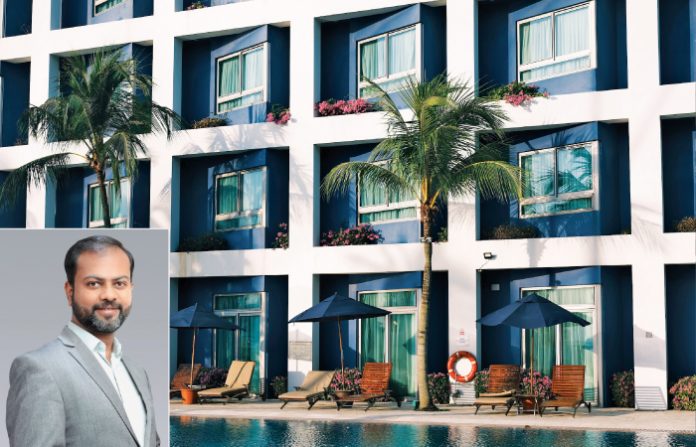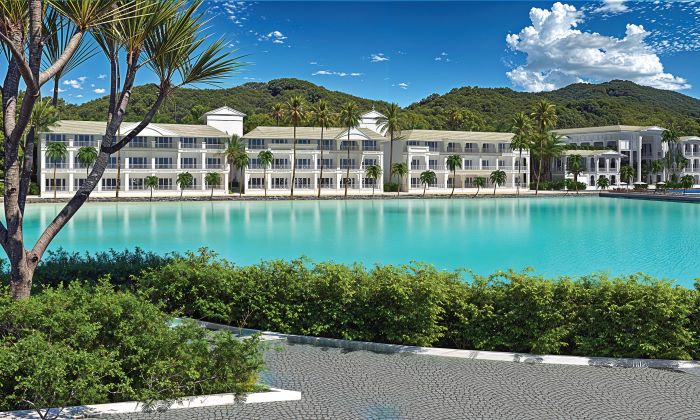Constructing or purchasing hotel involves key financial aspects, including right capital mix of debt & equity which should be duly considered by stakeholders, writes Nikhil Shah.
Dreaming of building or buying your own hotel? It is not just about location and design, but also about finding the perfect capital mix to make your investment thrive in the long run. Hotel property financing is a delicate dance of equity and debt and getting the right blend can be the key to success.
Imagine this: You have found the perfect piece of land for your hotel, with the potential for breathtaking views or a prime location outside the hustle and bustle of the city. You have crunched the numbers and have a vision of the type of hotel you want to create—a budget-friendly economy option, a cozy mid-scale getaway, a luxurious upscale experience, or even a top-tier luxury resort. But now comes the challenge of financing
your dream.
Hotel debt can be a double-edged sword. A well-thought-out capital mix can give you the power to expand your portfolio and unlock the potential of multiple properties. But if you are not careful, the wrong cycle can lead to a double dip in equity, leaving you struggling to fund interest and principal repayments. The below diagram displays the ideal move of capital over the years to have
sustainable debt:
If available equity is significantly below the above-mentioned levels, it is recommended to refrain from purchasing and building a hotel. The cost of funds varies from the institution and is currently in the following range:
- Bank: 9 per cent to 10.5 per cent
- NBFC: 11 per cent to 15 per cent
- Credit funds: 18 per cent to 25 per cent
Key aspects
Land cost
One of the critical factors to consider is the cost of land. Ideally, the land cost should be at most a 1:1 ratio of the overall development cost for hotels located outside main areas or metros. In non-metro or at leisure locations, land cost can be curtailed to 20–30 per cent of the total development cost. So, it is important to carefully evaluate the land cost and its impact on your overall capital mix.
Cost per room
Another key factor to keep in mind is the cost per room for different types of hotels, ranging from budget to luxury. Here is the typical range of cost of hotel rooms:
Time efficiency
If you are constructing a new hotel, time is of the essence. Delays in construction can accumulate interest during the construction phase, making the project financially unviable and potentially wiping out the existing owner’s equity. It is crucial to stick to your construction schedule and ensure timely completion to avoid these pitfalls.
Loan repayment
Another challenge with hotel debt is the loan repayment obligations. Lenders typically provide loans for 10 to 11 years, but for greenfield projects, it can take 3 to 4 years just for construction and another four years to stabilize occupancy. This means that in the initial years, the repayment obligations can be quite challenging.
Moreover, higher interest rates during the near-term maturity of hotel loans can intensify the consequences of debt service coverage ratio (DSCR) requirements. A hotel that may have maintained a healthy DSCR of 1.5x or higher during profitable times can face a higher interest rate and potentially have a DSCR closer to 1.0x during a down cycle. This can compound the challenges of cash flow impairment, making it even more difficult to meet DSCR requirements.
Structuring & restructuring
Structuring the hotel debt is an important element—not only the hotel should have a tenure of more than 10 years or more but also the principal payment should be ballooning. There are different financing options available depending on the stage of the hotel project. It is also essential to remodel/restructure the bank debt once the hotel is operational, gradually moving to a sustainable interest level.Let us look at financing options at various stages.
Greenfield
For developing a greenfield hotel, a bank is the best source of financing. These lenders tend to cap their lending at 60 per cent LTV, depending on the borrower’s profile and other businesses/hotels they have, and usually fund 5x to 6x, the EBIDTA of another operating cash flow.
Bank funds for greenfield construction are usually available to select owners (borrowers) who have other business sectors or prior hotel holdings. Even existing hotel owners can get bank funds based on the existing cash flows.
Brownfield
The development of a half-built hotel is a very cost-efficient option for hotel owners because it can be less expensive than building a new hotel from the ground up and takes a shorter time to achieve cash flows. Renovation/redevelopment loans can generally be obtained from banks or NBFCs. They usually provide 6x the projected EBIDTA.
Operating
The acquisition can be done via banks and NBFCs and special situation/credit funds. Credit funds generally come for a four-year period, and it is advisable to give them an exit within two years to maximize the returns for the acquired property. Credit funds usually fund 4x the EBITDA multiple.
NBFCs usually are aggressive and consider projects which banks are unwilling to fund. There are some institutions that fund under construction hotel assets based on the project itself without any additional cash flow. However, the owner is required to bring in a larger portion of the equity upfront before disbursement.
But do not despair! Despite the challenges, there are still plenty of lenders willing to provide hotel financing, even in the post-COVID situation. With the right capital mix and careful planning, you can unlock the secrets to successful hotel financing and bring your dream hotel to life.
So, if you are an investor, developer, buyer, or owner seeking hotel financing, remember that it is not just about the location and design, but also about finding the right capital mix. It is an art that can make your hotel investment thrive in the long run.










